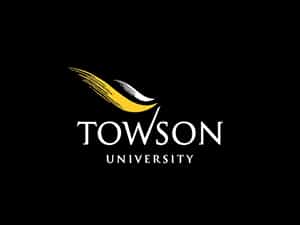Towson University Builds Clinical Curriculum Through Virtual Simulation

In Fall 2017, AACTE member institution Towson University’s College of Education launched a pilot program, SIMTeach@TU, to strengthen its clinical and practice-based curriculum through virtual simulation. The program features eight faculty who develop problem-based case scenarios for teacher candidates to experience real-world human interactions with avatars via the virtual reality technology called Mursion. The training simulations recreate the most demanding interpersonal challenges that teacher candidates may confront in the classroom with PK-12 students. It allows preservice teachers to practice and master the complex interpersonal skills necessary to be effective in difficult situations.
“We see simulation—or approximations of practice—work as part of the trajectory of getting our preservice teachers ready to work with real students in classrooms,” said Laila Richman, associate dean of the College of Education at Towson. “We think about this as the first phase of a university-based clinical curriculum that moves them towards being able to work with students.”
The simulation is designed to highlight the high-leverage instructional practices promoted by Deborah Ball at TeachingWorks, which are a core set of fundamentals of teaching critical to helping students learn and for advancing skill in teaching. Towson University focuses on four of the 19 high-leverage. The Mursion technology creates a virtual classroom of five students who have distinct personalities that are consistent through all of the case scenarios. During the simulation, teacher candidates have the opportunity to practice a specific strategy and then engage in discussion with their professors and peers for feedback.
“Our overall goal is to move to a practice-based teacher education so it truly aligns with the key tenets of a clinical curriculum. We seek to highlight the work of practice and teaching in our curriculum rather than waiting for field experiences to teach our students,” said Laurie Mullen, dean of the College of Education at Towson. “Typically we talk at students about classroom practice but we want to move to our faculty modeling a particular practice that their students can learn, rehearse, and receive feedback while still here at the university before entering into the classroom.”
Towson is one of few institutions who have hired their own simulation specialist to work onsite at the university. This offers faculty the opportunity to work one-on-one with the specialist to develop simulation experience on specific class topics and curriculum requirements. It also broadens the tool to be used for the professional development of university faculty as well as PK-12 classroom teachers in local districts. Towson currently has plans underway to partner with Baltimore County Schools to implement the training simulation for its in-service teachers.
“We see this technology as a role for classroom teachers who would like to work on a specific skill as well as a role for higher education faculty. We have heard those faculty who are piloting this work say, ‘I will never go back and teach the same way again,’ and ‘I learned much about my practice – what I was doing right and what I could do better,’” Mullen said. “And, we have cooperating teachers who work with our students in their field-based practicum say, ‘What are you doing differently because I notice a difference in your students’ skillset and expertise in what they are coming in with.”
The pilot program also provides the participating faculty an opportunity for deeper engagement in developing their curriculum because they are no longer preparing a lecture for their students. They must also consider the range of responses teacher candidates must address in the classroom in order to make the best use of the simulation experience. The faculty have to know and understand the practice really well and anticipate common student mistakes, errors, misunderstandings, and misconceptions. The developed scenarios also are reviewed by in-service teachers to confirm whether they are on target for what really happens in the classroom. This classroom teacher feedback gives the faculty an opportunity to keep a finger on the pulse of what is happening in the field to ensure the university’s instruction is relevant.
“One factor I think is important to our pilot program is to anchor this new technology in our strategic direction toward our priorities in order to successfully engage faculty and students in a coherent way,” said Mullen. “At the end of the pilot, we would like to have a better understanding of the relationship between university coursework preparation and teaching in our partner school sites. We want to ensure that our students have already developed a base level of expertise by the time they go out to engage with real children. We aim to better ensure that when they are in front of PK-12 learners, they have skills that they have been taught, practiced, rehearsed, and mentored.”
Tags: pedagogy, program improvement, research, school-university partnerships, teacher quality, technology






